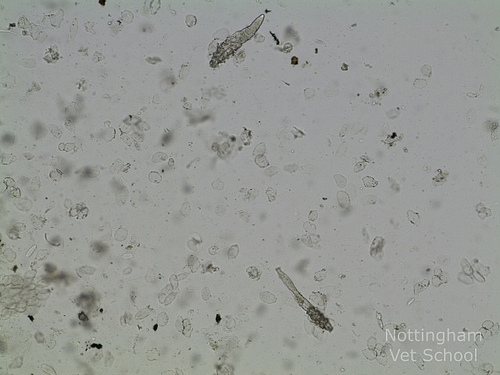By Ashley O’Neill (Contributor) – Email
Print Edition: January 30, 2013
You know that blissful moment after you have a shower where you feel nice and clean? Well, you aren’t as clean as you think.
Our bodies are the host to trillions of different species of bacteria and fungi, living both on the skin and in your organs. However creepy or gross this may be, most of the bacteria living in our organs are actually quite helpful; they aid in digestion and absorption of nutrients, rid the body of toxins and strengthen the immune system.
You are literally crawling with bacteria, inside and out, but what may be particularly disturbing is the tiny mites that live in the hair follicles on your face.
These mites typically live in the hair follicles of your eyelashes, eyebrows, forehead and ear hairs, but they are also known to be found on the chest, forearms and private parts. They are more likely to live in oilier environments (which is why they are more commonly found on your face, and have higher populations in the summer).
There are over 100 recognizable species of face mites, which fall into the Demodox genus, a combination of the Greek word for lard (demo) and boring worm (dex) to get Demodex, a worm that bores into fat.
The two species most commonly found on humans are about 0.3 to 0.4 millimetres in length and look like little worms with elongated bodies. Demodex assume a “head-in tail-out” position in your hair follicle, with their tail poking out just at the surface of your skin.
They are most commonly found in adults because they feed on sebum, an oily substance that lubricates and waterproofs the skin, and is produced in higher quantities by adults. Like most microbes, the mites’ favourite pastime is eating, and when they are not eating they are mating or moving between hair follicles.
Yes. Not only can the face mites burrow into a single hair follicle, but they can move around from one to another as they please.
The mites have stubby little legs that they use to travel across your skin, especially during the night. Dr. Shannon Weeks, a naturopathic doctor and applied kinesiologist explains on her blog that our bodies have a natural defence system for keeping the mites from overproducing. If we cannot produce the antibodies we need to control the parasites, too many mites can cause an infestation; this leads to skin breakouts and rashes. A common (but harmless) condition caused by these microbes is called rosacea, which causes redness of the face, irritated eyes and acne sores.
Follicle mites live in groups of three to six mites per hair follicle, but can occasionally group in larger numbers. This means that a single hair follicle could be the equivalent of a mite nightclub – a mating hotspot for a colony of Demodex mites, especially if (as mentioned above) your body is ineffective at producing antibodies.
You will probably live your whole life in an unknowing harmony with these tiny guests, but perhaps the harmony partly comes from the “not knowing” part.
After all – you don’t feel so clean anymore, do you?


